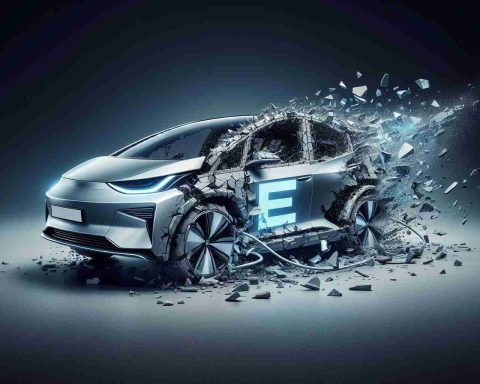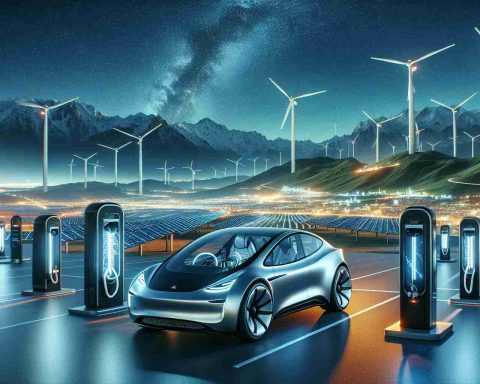Major Setback for Electric Vehicle Innovation
In a surprising turn of events, Canoo has declared Chapter 7 bankruptcy, immediately halting all operations due to a significant funding crisis. The electric vehicle startup struggled to secure necessary financial backing, leading to this drastic measure.
The company had faced numerous setbacks, including the loss of several key executives and the announcement of employee furloughs. A recent SEC report revealed that Canoo was left with a mere $700,000 in its accounts, highlighting the dire straits it found itself in.
In their bankruptcy news release, Canoo expressed their inability to obtain funds from the Department of Energy’s Loan Program and other potential foreign investors. After attempts to resolve the financial shortfall failed, the company’s board chose to pursue bankruptcy as a last resort.
Canoo’s financial obligations exceed $164 million, while their assets are reported at around $126 million. Under the Delaware bankruptcy filing, the company’s assets will face liquidation, with proceeds being allocated to settle debts with creditors.
The CEO, Tony Aquila, conveyed a sense of disappointment regarding the company’s fate. Canoo had initially garnered attention for their electric vans, which included models for NASA and prototypes for the U.S. Army, alongside potential contracts with major corporations like USPS and Walmart. Yet, the realization of these ambitious projects remained limited, leading to the company’s untimely decline.
The Broader Implications of Canoo’s Bankruptcy
The unexpected bankruptcy of Canoo serves as a stark reminder of the challenges facing the electric vehicle (EV) sector amidst a rapidly changing economic landscape. This development could have far-reaching consequences not only for investors and employees but for the entire EV industry and the global market as a whole.
As one of the many startups striving to revolutionize transportation, Canoo’s failure reflects a growing trend of consolidation within the industry, where only a few well-capitalized firms may survive. The fallout could dampen investor confidence in emerging technologies and lead to increased scrutiny of financial practices within these companies, hindering further innovation. If investment flows to established giants instead of pioneering startups, it may stifle creativity and limit the potential for diverse solutions in sustainable mobility.
Furthermore, the environmental implications of Canoo’s demise are significant. The aspiration to develop electric vans for military and commercial applications projects a vision of reduced emissions and sustainability. Losing a player in this field may delay the transition to cleaner transportation options. It is crucial to understand that the future of the global economy hinges on sustainable alternatives; thus, setbacks like this could slow progress in addressing climate change.
In the long term, industry watchers will likely see shifts in regulatory landscapes and possibly increased governmental support for promising projects in an attempt to safeguard against similar failures. Nonetheless, the loss of companies like Canoo emphasizes the need for robust funding mechanisms and partnerships between public and private entities to foster a more resilient and innovative EV ecosystem.
The Rise and Fall of Canoo: Lessons from a Startup’s Journey
Major Setback for Electric Vehicle Innovation
Canoo, once a promising contender in the electric vehicle (EV) market, has recently declared Chapter 7 bankruptcy, a decision that marks a significant downturn for the company and raises questions about the future of innovative EV startups. This article explores the factors leading to Canoo’s downfall, potential implications for the EV market, and lessons learned from this case.
Overview of Canoo’s Journey
Founded in 2017, Canoo aimed to disrupt the traditional automotive industry with its unique electric vans and vehicles designed for a variety of applications, including commercial use and advanced technologies for agencies like NASA and the U.S. Army. With a focus on sustainability and innovation, Canoo initially attracted attention and investment but soon faced a series of challenges that culminated in its dramatic bankruptcy filing.
Causes of Bankruptcy
Canoo’s financial troubles stemmed from several key factors:
– Funding Crisis: Despite promising technologies and partnerships, the company struggled to secure essential funding from various sources, including the Department of Energy’s Loan Program. Reports indicate that Canoo had only $700,000 remaining in its accounts at the time of filing, highlighting an unsustainable financial situation.
– Leadership Instability: The loss of key executives and subsequent employee furloughs contributed to a lack of strategic direction and morale among the workforce, ultimately hindering operational capabilities and investor confidence.
– Market Competition: The EV market is fiercely competitive, with established automakers and new entrants alike vying for market share. Canoo’s ambitious goals became increasingly difficult to achieve amidst this pressure, resulting in limited product rollout and revenues.
Impact on the Electric Vehicle Market
Canoo’s bankruptcy could have broader implications for the EV sector:
– Investor Sentiment: The failure of a high-profile EV startup may dampen investor enthusiasm for similar ventures, causing stricter scrutiny on funding applications and business models of emerging companies.
– Industry Innovation Pace: Uncertain market conditions could lead to a slowdown in innovations as startups may struggle to secure the necessary backing to develop and launch new products, potentially hindering progress in EV technology.
Lessons Learned and Future Predictions
From Canoo’s experience, several lessons can be extracted for future startups in the EV space:
– Financial Prudence: It is crucial for startups to maintain a sustainable financial model and ensure diverse funding sources before scaling operations.
– Leadership Stability: Strong and consistent leadership is vital for maintaining morale and providing clear strategic direction, especially during challenging times.
– Adaptive Strategy: Responding swiftly to market feedback and evolving technological landscapes can provide startups a better chance at survival in the competitive EV market.
Conclusion
Canoo’s rise and subsequent downfall serve as a stark reminder of the volatile nature of the electric vehicle industry. As the market matures, it will be essential for new entrants to take heed of Canoo’s experience, building robust financial strategies and adaptable business models that can withstand the competitive and regulatory pressures of the automotive landscape.
For more insight into the electric vehicle market and innovative technologies, visit Automotive Future.














